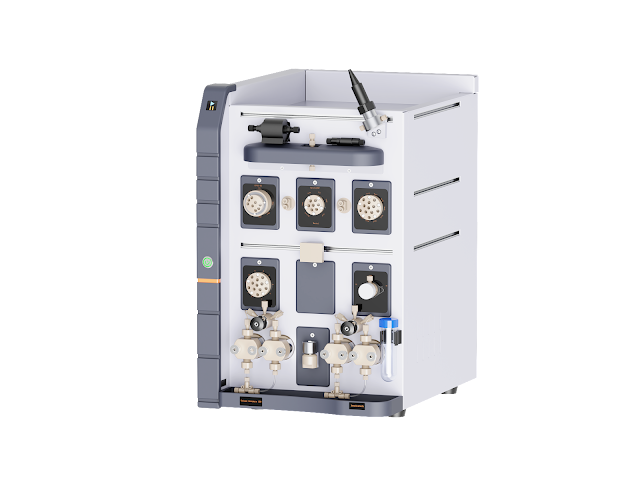Mastering Molecular Complexity: The Evolution and Impact of FPLC in Protein Chromatography
Fast Protein Liquid Chromatography (FPLC) is a specialized chromatography technique primarily used in biochemistry and molecular biology to separate proteins from complex mixtures. Unlike traditional liquid chromatography methods, FPLC focuses on precision and gentle operating conditions, making it ideal for delicate biological molecules. The process involves utilizing a chromatography column filled with stationary phase material, through which a mobile phase or buffer is passed. FPLC relies on the differential interaction of various proteins with the stationary phase, allowing for effective separation based on attributes such as size, charge, and binding affinity.

The Process of FPLC Chromatography:
FPLC chromatography involves several critical stages for successful protein separation. The first stage is the application of the sample to the column. A buffer is then passed through the column at a controlled flow rate, facilitating the interaction between the proteins and the stationary phase. Depending on their specific properties, different proteins will adhere to the column material to varying degrees. Subsequently, by altering the buffer composition or employing a gradient, proteins are eluted at different times. This controlled elution is key to achieving high-resolution separation in FPLC.
Applications of FPLC:
FPLC finds extensive applications in biotechnology and pharmaceutical research. It is beneficial for purifying proteins for therapeutic use, studying protein-protein interactions, and analyzing complex biological samples. The ability of FPLC chromatography to maintain protein integrity during separation is vital for applications where protein activity and structure must be preserved. This characteristic makes FPLC an invaluable tool in developing biopharmaceuticals, where maintaining the biological activity of proteins is crucial.
Advancements in FPLC Technology:
Recent advancements in FPLC technology have significantly enhanced its efficiency and applications. Modern FPLC systems are automated and can be programmed for specific purification protocols, making the process more reproducible and less labor-intensive. Additionally, the introduction of more sophisticated stationary phases and detection methods has improved the resolution and sensitivity of FPLC chromatography. These advancements have broadened the scope of FPLC, allowing it to be used in more complex analytical scenarios, such as the study of post-translational modifications of proteins.
Enhanced Capabilities in Protein Analysis:
Taking FPLC's capabilities further, this technique has revolutionized the way scientists approach protein analysis. Its precision and adaptability make it suitable for various applications, from basic research to large-scale pharmaceutical production. FPLC continues to adapt as technology evolves, offering more nuanced and sensitive methods for protein separation and analysis, thus playing a crucial role in advancing biochemical research.

Conclusion:
FPLC and FPLC chromatography are pivotal techniques in modern biochemical and pharmaceutical research. Their ability to separate complex protein mixtures with high precision and minimal impact on protein integrity makes them indispensable in studying and applying proteins. As the demand for more sophisticated biotechnological solutions grows, the role of FPLC is likely to expand further. For more detailed insights and advanced resources on FPLC and its applications, you can visit inscinstech.com.cn, a domain dedicated to scientific technology and instrumentation.
.jpg)

Comments
Post a Comment